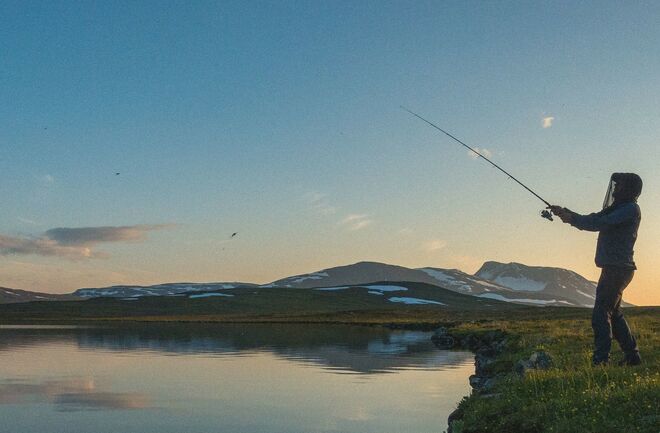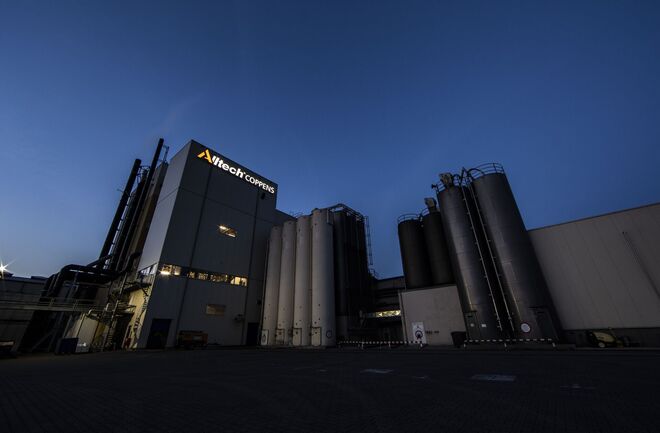
Sustaining the Thrill: How to Keep Your Game Fish Strong and Healthy
Discover the crucial steps to ensuring the well-being of game fish, from proper landing and handling techniques to nutrition and sustainability.
Recreational angling has gained popularity over the years, and the number of fishing licences issued is still increasing. Especially during springtime, when the sun is gaining strength and the water temperature is slowly rising, more people are being drawn to the banks of various angling venues. This is no surprise, as angling is a way to enjoy the natural environment, which boosts our physical and mental health.
But what about the fish we catch — and the fish we hope to catch in future?
How do we keep our game fish strong and healthy?
Responsible fish handling
Nothing beats the adrenaline rush felt during the catch of a stunning carp or fast-accelerating pike. The next thrill, of course, is taking a photo to preserve the moment. But anglers must take time and effort to follow responsible fish handling practices after the catch.
First, be sure to use a sufficiently large landing net, an unhooking cradle, and safe leaders. Then act quickly in removing the hook, handling the fish with care, especially on hot summer days and with very vulnerable fish species such as pike. In addition, protect the fish’s vital mucous layer with small measures like pouring water over it and handling it with wet hands.
While many anglers already know and follow these practices, raising more awareness will add to the protection of these valued game fish.

Optimal Bait Choices
Bait choice plays an important role in attracting fish to the feeding spot. The bait must be attractive and easily available to the fish. Attractants such as krill meal or certain oils can enhance attractiveness of the pellet. The bait must also be water-stable, and it must not satiate the fish too quickly, or they will soon leave the feeding area. Ideally, a so-called ‘feeding frenzy’ occurs at the fishing spot, which is the perfect ingredient for a successful day of fishing.
Besides attracting fish, any feed used as bait must support their health, growth and development. In a lot of extensively stocked lakes, fish such as carp or bream rely heavily on naturally available food sources such as zooplankton and macrobenthos, but when stocks are increased, fish become more dependent on supplied fish feed. Since this makes it a substantial part of their diets, there is no room for nutritional deficiencies.

Taking this into account, it is essential to choose a high-quality bait when going out for angling. While bait preferences vary across different disciplines of angling, clear science exists on basal nutrient requirements. For instance, the feed used as bait should have an optimal amino acid and fatty acid profile. Also, prebiotic fibres can be added to support a thick mucous layer on the skin and gills and in the gut; this will protect against parasites and pathogenic bacteria.
At Alltech Coppens, we develop angling feeds which are based upon our leading-edge aquaculture feeds, so all nutritional requirements are spot-on.
Protecting the environment
Responsible use and management of our valued angling venues and their green surroundings is vital, to make sure they remain in good condition for other anglers. This can be done through appropriate restocking and management of different habitat types: spawning areas can be excluded from fishing in spring, and creating safe zones — perhaps with branches or cages — to protect juvenile fish from predatory fish and birds is an effective measure. Managing angling methods is crucial as well. For example, anglers can use alternatives to lead sinkers, such as concrete, to reduce pollution.
Eutrophication is becoming a greater risk in many bodies of water. This is when an oversupply of nutrients causes an excessive growth of aquatic plants or algae that can be harmful to the fish. To tackle this, policies that limit the amount of nutrients entering the water must be implemented. Measures already taken in some areas include the prevention of agricultural runoff, planting vegetation to catch nutrients, or limits for feeding with bait.
A Sustainable Future
In alignment with our enduring dedication to sustainability and the future of angling, we have formulated a sustainable feed within our private label concept. Together, we are working towards developing more sustainable solutions to support the angling sector. We use only animal byproducts, and we avoid ingredients with a high carbon footprint. We also only use highly digestible minerals, which helps to reduce eutrophication.
Through all these approaches, we here at Alltech Coppens are working to preserve our precious fish stocks and their habitats, protecting the environment and supporting the fun and rewarding angling hobby for this generation and the ones to come.

Care to collaborate?
Discover the endless possibilities of unique feeds in our private label concept! Click here to explore and seize the opportunity for sustainable and innovative feed solutions.
Explore our angling feeds, designed to preserve fish stocks and habitats while ensuring a thriving angling sector for generations to come.



